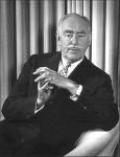Music
The late Michael Nesmith, cerebral member of The Monkees, embodied youth unrepressed.
The blind guitarist and singer from Deep Gap, North Carolina transformed American music by blending bluegrass, folk, country, blues, and gospel.
A longtime expert on Blues music recounts what it was like to work with an artist who defies definition.
The answer is complex, confusing, American.
For most of the 1800s, whites in blackface performed in widely popular minstrel shows, creating racist stereotypes that endured for more than a century.
For most of the 1800s, whites in blackface performed in widely popular minstrel shows, creating racist stereotypes that endured for more than a century.
Was Hal Blaine one of your favorite musicians back in the 1960s? How about Larry Knechtel? Carol Kaye? Oh yes they were.
For the brilliant songwriter behind the Beach Boys, the endless summer gave way to a very hard winter. Now he is back, with a work that wants to be no less than a musical history of the American dream.
He was in the vanguard of that wave of young Britons who, in the 1960s stormed our shores and gave us back our musical heritage
You’ve probably never heard of them, but these ten people changed your life. Each of them is a big reason why your world today is so different from anyone’s world in 1954
It’s the fastest-growing music in America. It’s a three-billion-dollar-plus industry. Cable stations devoted to it reach sixty-two million homes. And yet, says one passionate follower of country music past and present, its story is over.
The great Czech composer arrived on these shores a century ago and wrote some of his most enduring masterpieces here. Perhaps more important, he understood better than any American of the day where our musical destiny lay.
The tremendous response to his radio shows led to standing-room-only theatre performances and cross-country tours, but Rudy Vallée claimed it was just good luck and timing.





